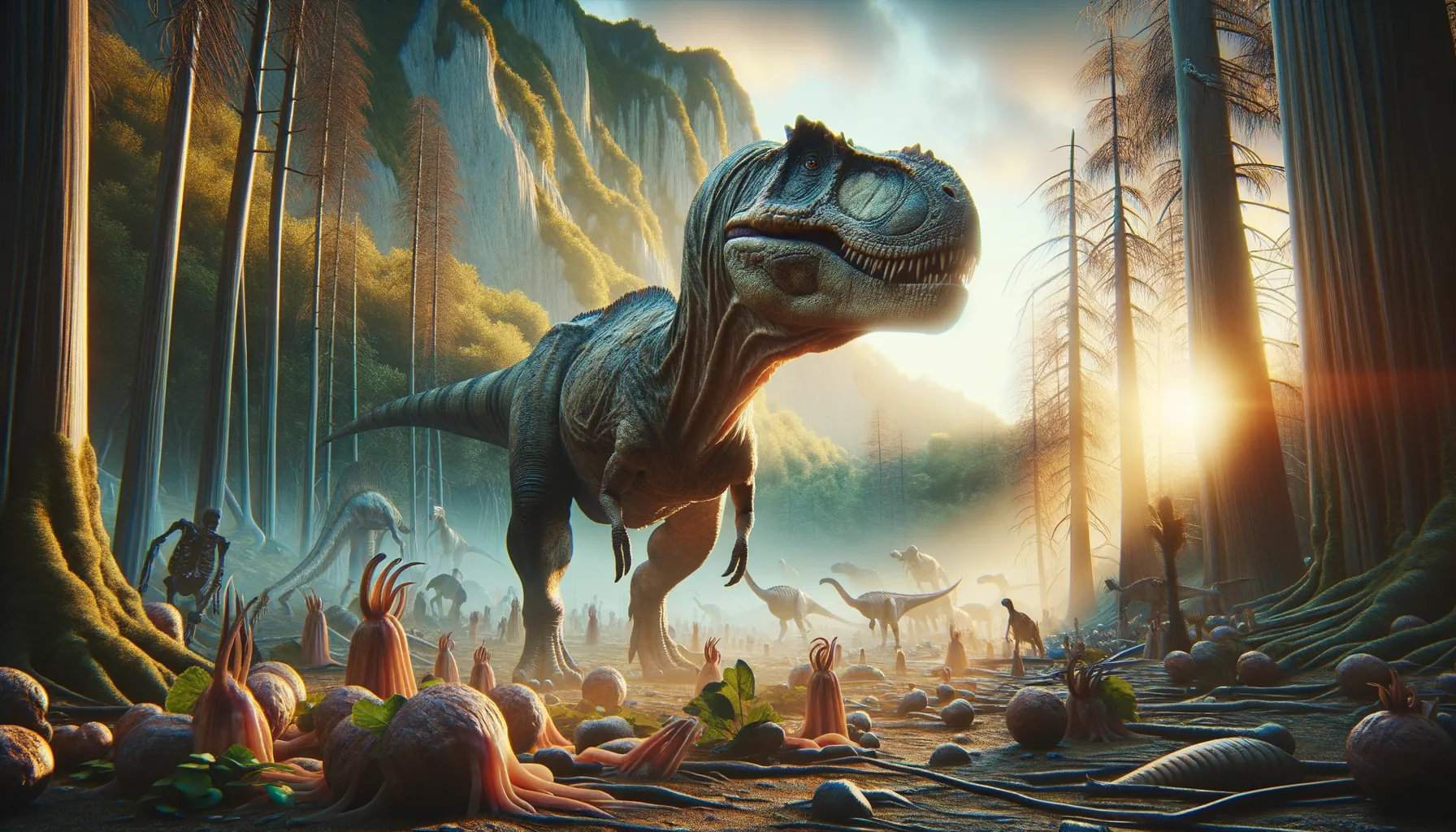
Hypsirophus
Imaginary dinosaur of endless possibilities!
Period
Cretaceous
Length
Unknown, possibly within medium to large range.
Height
Unknown, presumed moderate dimension.
Weight
Unknown, hypothetically medium-sized.
Hypsirophus is a fictional dinosaur species created for educational and entertainment purposes. Though non-existent in the fossil record, it can be imagined as a hypothetical medium-sized dinosaur that roamed prehistoric landscapes. This dinosaur serves as an imaginative exercise in understanding dinosaur ecology and behavior typically associated with creatures from the Cretaceous period. Such creations help in exploring theories in paleontology, encouraging curiosity and creative thinking about life millions of years ago.
Diet
As a fictional dinosaur, its diet is speculative. It could be imagined as a herbivore, grazing on the abundant plant life of its time. Alternatively, it could be a carnivore or omnivore, depending on its ecological role.
Hunting
Being a fictional entity, its hunting behavior is purely speculative. If carnivorous, it might have used stealth to catch prey. As a herbivore or omnivore, it would have foraged for food, adapting to available resources.
Environmental challenges
Fictional dinosaurs like Hypsirophus are imagined to face similar challenges to real dinosaurs, such as climate changes and predation. They might have adapted to changes in vegetation or shifts in their ecosystem. These hypothetical scenarios encourage discussions about how animals adapt to their environment.
Speed
Unknown, estimates suggest moderate mobility.
Lifespan
Unknown, typical for medium-sized dinosaurs.
First discovery
Hypsirophus is a fictional dinosaur.
Fun Facts
- Hypsirophus was a dinosaur that lived during the Late Cretaceous period, millions of years ago.
- It had distinctive tall spines on its back, which may have supported a sail or hump.
- The name Hypsirophus means 'high crest', referencing its unique back structure.
- Hypsirophus was herbivorous, feeding on plants and small shrubs.
- Fossils of Hypsirophus have been found in parts of what is now Africa and Europe.
- Hypsirophus likely moved in herds for protection against predators.
- This dinosaur's unique physical traits make it an exciting subject for paleontologists studying dinosaur diversity.
Growth and Development
As a fictional dinosaur, its growth and development are speculative. It might mature similarly to other medium-sized dinosaurs, gradually increasing in size and strength over its juvenile years. Its development might illustrate general patterns observed in real dinosaurs, serving as a model for educational purposes.
Habitat
Hypothetical scenarios place Hypsirophus in diverse prehistoric environments. It might be imagined inhabiting forests, open plains, or river valleys typically associated with the Cretaceous period. These settings allow exploration of adaptations specific to diverse habitats faced by real dinosaurs in that era.
Interaction with other species
As a fictional dinosaur, any interaction is speculative. It might have coexisted with other dinosaurs, competing for resources or establishing symbiotic relationships. Such interactions can illustrate ecological dynamics necessary for survival in its hypothetical environment.
Natural lifespan
Unknown, as a fictional construct.
Reproduction
Speculation about its reproduction might include similar strategies to other dinosaurs, such as egg-laying and nesting behaviors shared among Cretaceous species. This offers insight into understanding reproductive diversity in hypothetical prehistoric life.
Social behaviour
If imagined, Hypsirophus might exhibit social behavior analogous to known dinosaurs like herd movement or solitary existence based on ecological demands. These speculations foster discussions about social structures in dinosaur communities.
Fossil locations
Being fictional, it lacks recorded fossil locations. However, pondering hypothetical sites stimulates dialogue about where such a species might have thrived and the geological processes preserving fossils.
